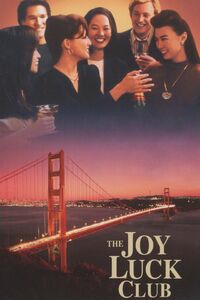(Adding categories) |
(Adding categories) |
||
| (20 intermediate revisions by 3 users not shown) | |||
| Line 9: | Line 9: | ||
==Storyline== |
==Storyline== |
||
==Sound Effects Used== |
==Sound Effects Used== |
||
| + | * [[CINESOUND GUNSHOT 01]] |
||
==Image Gallery== |
==Image Gallery== |
||
==Audio Samples== |
==Audio Samples== |
||
[[Category:MOVIES]] |
[[Category:MOVIES]] |
||
[[Category:Live-Action Movies]] |
[[Category:Live-Action Movies]] |
||
| + | [[Category:90s Movies]] |
||
| + | [[Category:90s Programs]] |
||
| + | [[Category:1990s Movies]] |
||
| + | [[Category:1990s Programs]] |
||
| + | [[Category:1993 Movies]] |
||
| + | [[Category:1993 Made]] |
||
| + | [[Category:1993 Started]] |
||
| + | [[Category:1993 Ended]] |
||
| + | [[Category:Rated R]] |
||
| + | [[Category:Rated R Movies]] |
||
| + | [[Category:Rated R Live-Action Movies]] |
||
| + | [[Category:Buena Vista Pictures Movies]] |
||
| + | [[Category:Buena Vista Pictures Distribution Movies]] |
||
| + | [[Category:Hollywood Pictures Movies]] |
||
| + | [[Category:Films Directed By Wayne Wang]] |
||
| + | [[Category:Movies that have music composed by Rachel Portman]] |
||
| + | [[Category:Skywalker Sound]] |
||
| + | [[Category:THX Ltd.]] |
||
Revision as of 05:16, 14 August 2021

September 8, 1993
The Joy Luck Club (simplified Chinese: 喜福会; traditional Chinese: 喜福會; pinyin: Xǐ Fú Huì) is a 1993 American drama film about the relationships between Chinese-American women and their Chinese immigrant mothers. It was directed by Wayne Wang and stars Tsai Chin, Kieu Chinh, Lisa Lu, France Nuyen, Rosalind Chao, Lauren Tom, Tamlyn Tomita, and Ming-Na Wen. The film is based on the 1989 novel of the same name by Amy Tan, who co-wrote the screenplay with Ronald Bass. The film was produced by Bass, Tan, Wang and Patrick Markey while Oliver Stone served as an executive producer. Four older women, all Chinese immigrants living in San Francisco, meet regularly to play mahjong, eat, and tell stories. Each of these women has an adult Chinese-American daughter. The film reveals the hidden pasts of the older women and their daughters and how their lives are shaped by the clash of Chinese and American cultures as they strive to understand their family bonds and one another.
Development of the project began when Wang approached Tan in 1989 at the time of the novel's release. Concerned about the novel's complex storytelling and character development, they teamed up with Bass in January 1990, who added a farewell party not in the original novel and voice-overs to compress the film's storytelling without changing the main plot. Carolco Pictures initially supported the project until 1990, when the filmmakers turned down the contract for not receiving the creative control that they demanded. After the first draft was written between August and November 1991, the filmmakers shifted to Hollywood Pictures in spring 1992. Principal photography took place in San Francisco, the novel and the film's main setting, in October 1992 and then in China in February 1993; filming ended in March 1993.
The film was privately screened in sneak previews in spring 1993 and film festivals in August and September 1993. It premiered in Los Angeles, New York City, and San Francisco on September 8, 1993. With the film's $10.5 million budget, it was moderately successful in the box office, earning $32.9 million in the United States. It received positive critical reaction but also criticism for its negative portrayal of Asian American male characters.
In 2020, the film was selected for preservation in the National Film Registry by the Library of Congress as being "culturally, historically, or aesthetically significant".
